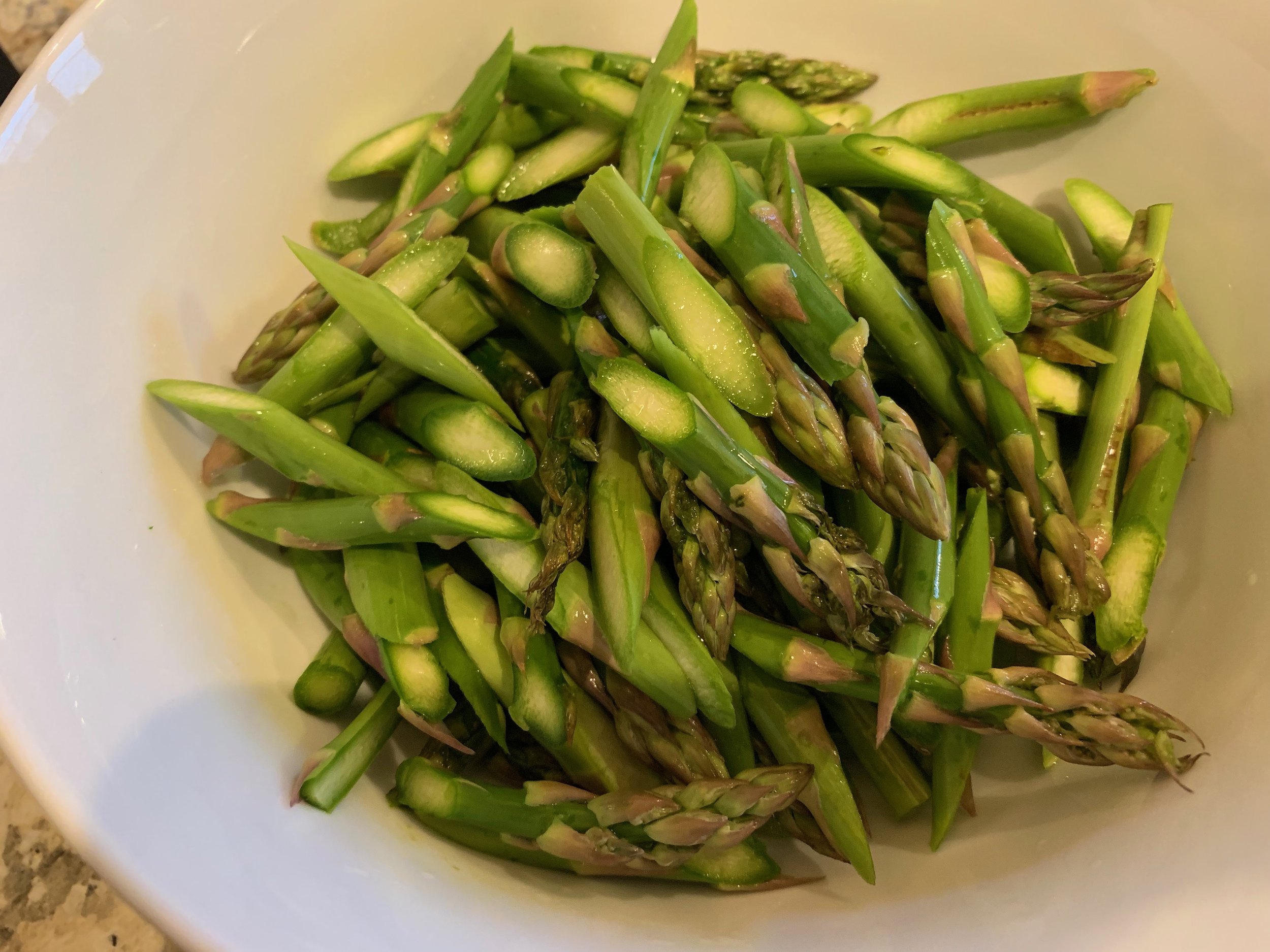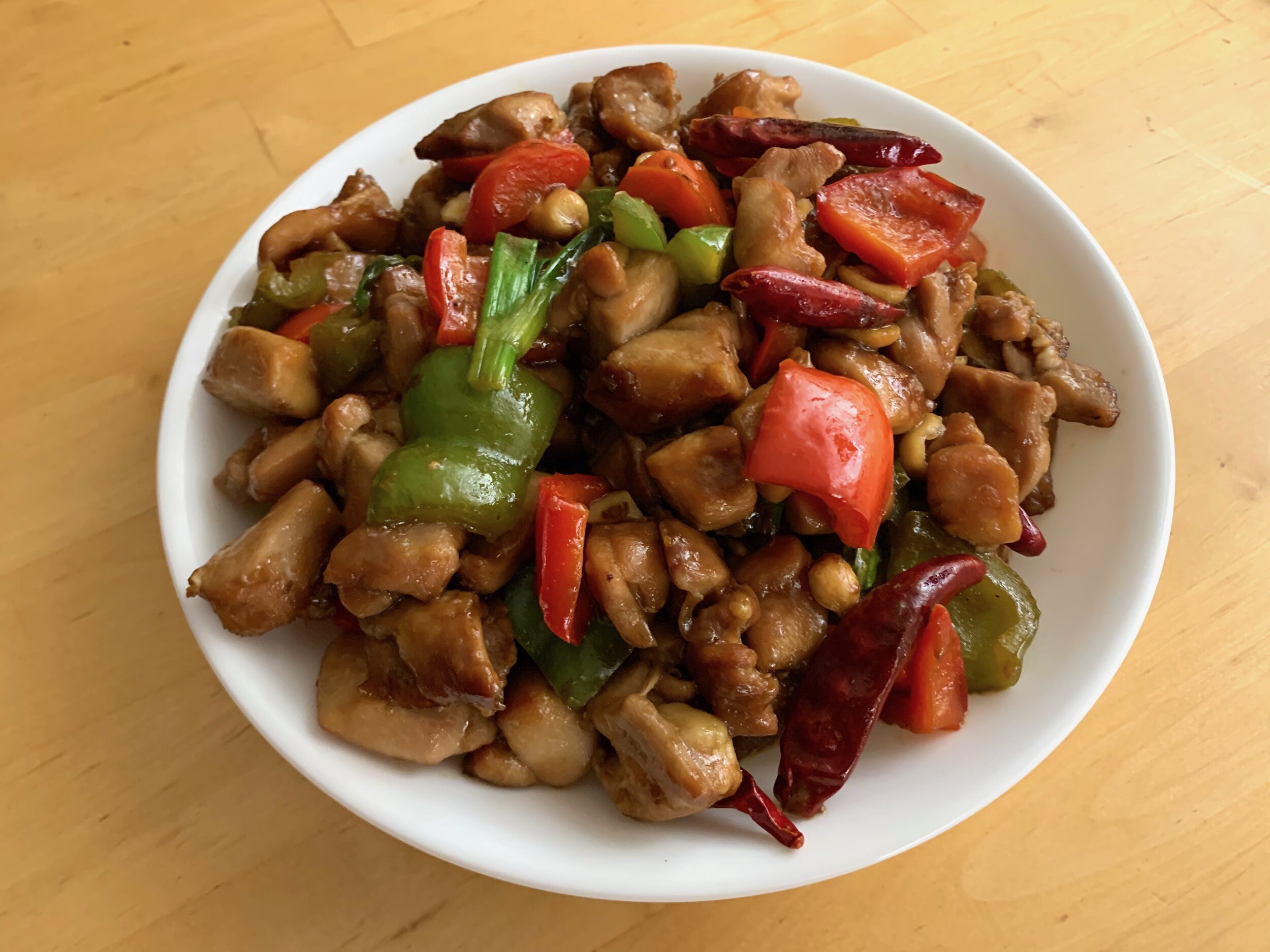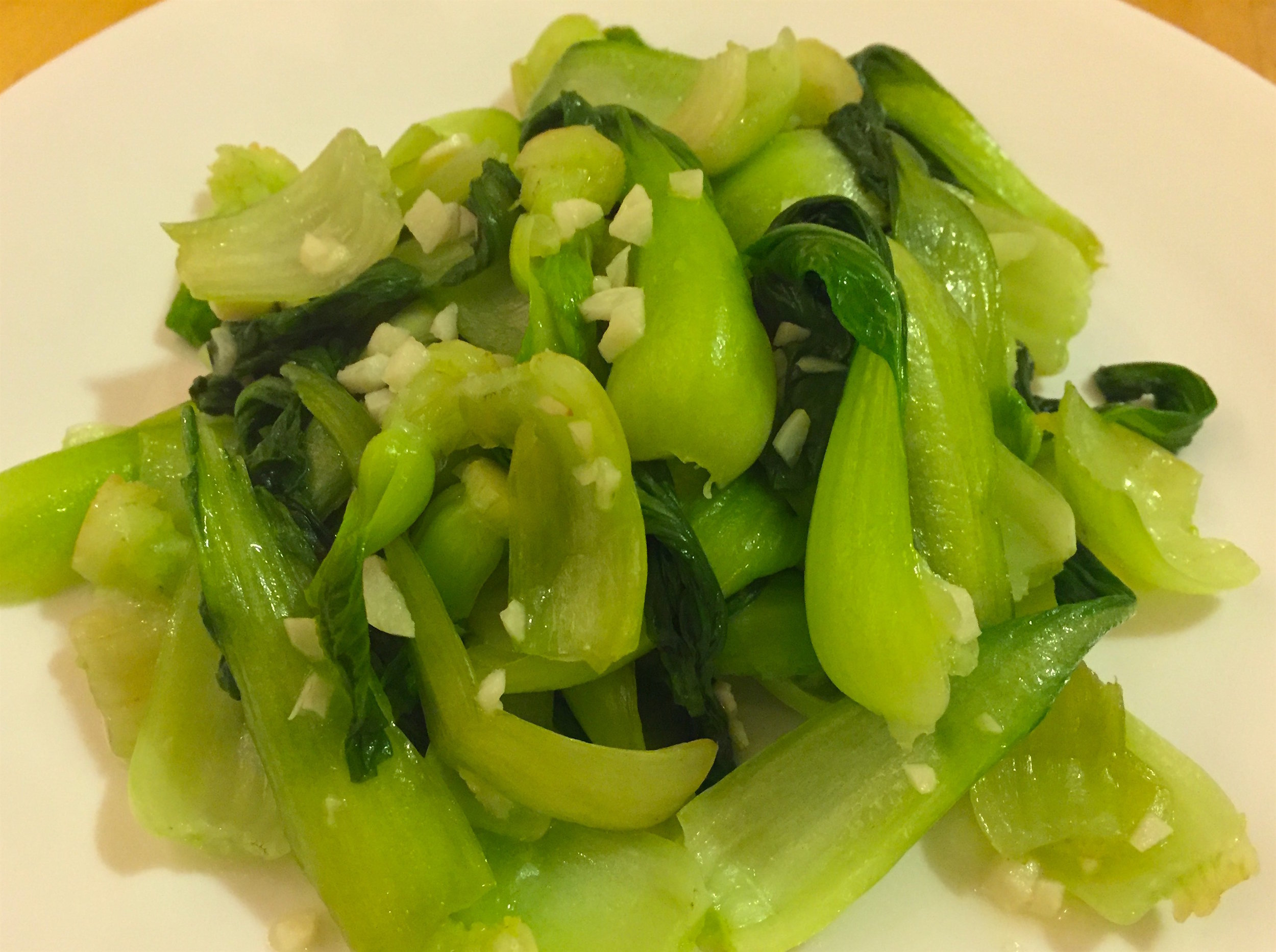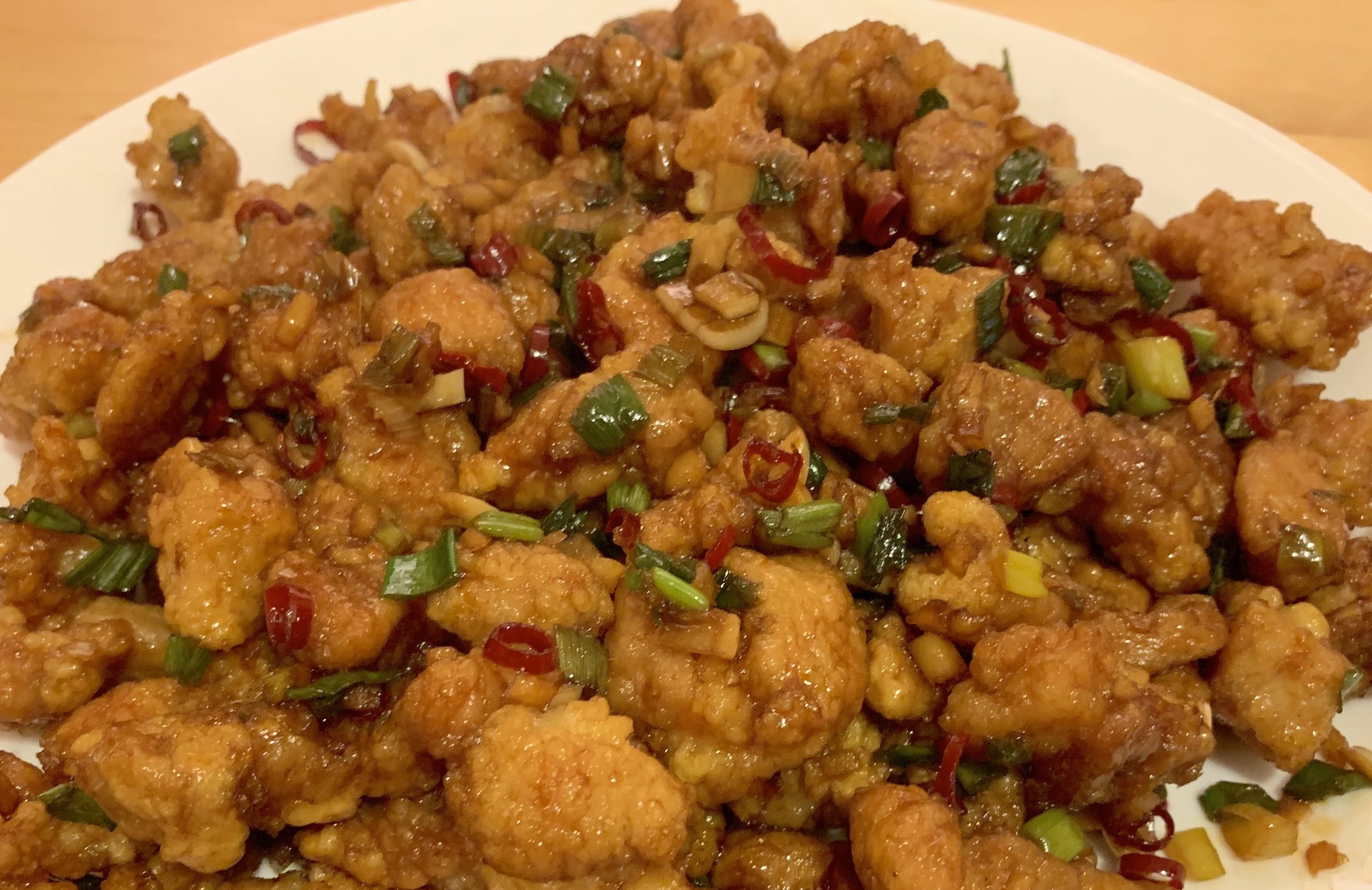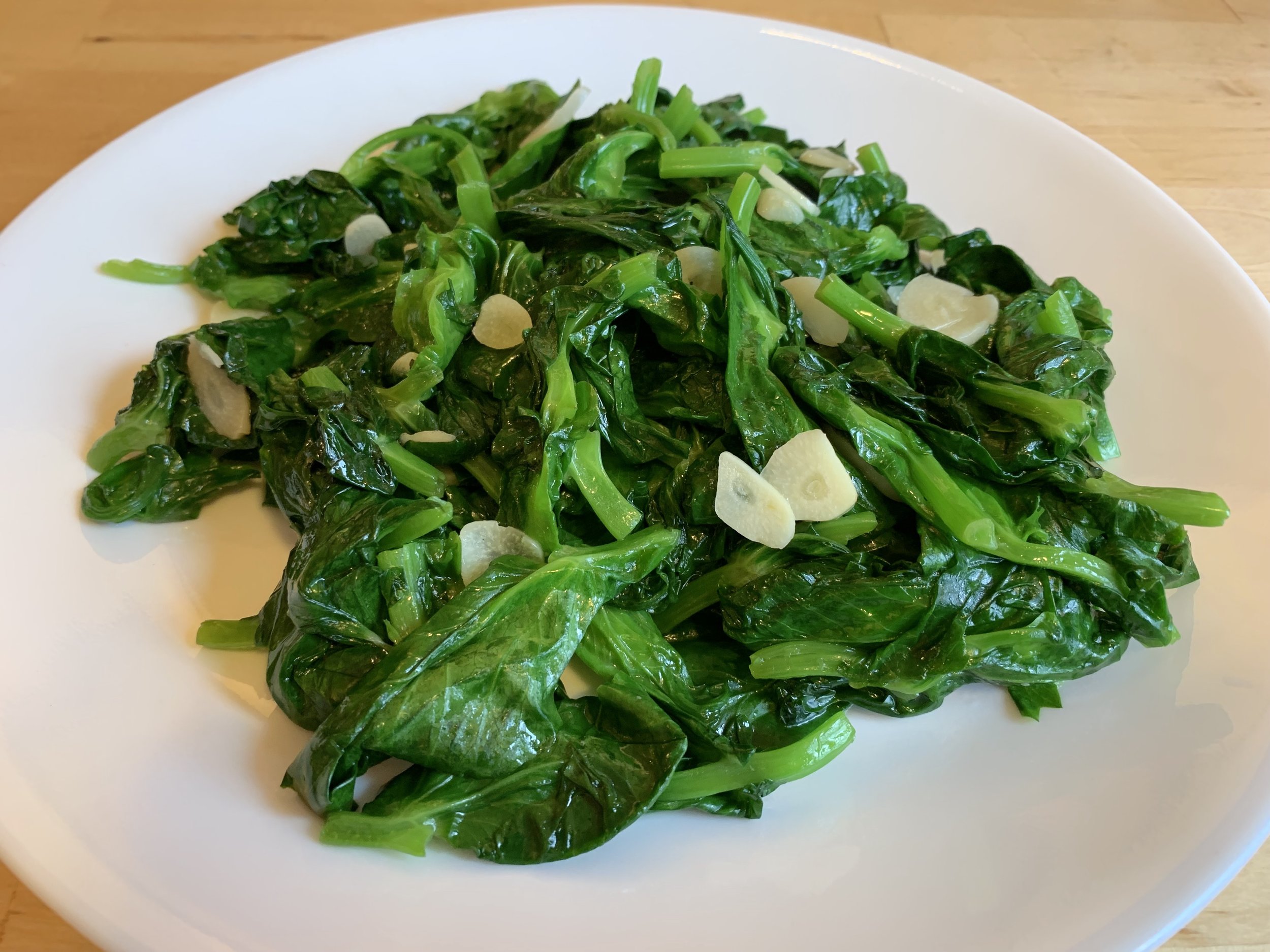Chicken with Asparagus

鸡肉炒芦笋 (Ji Rou Chao Lu Sun)
Chicken with asparagus is a relatively recent invention, but has become a common Chinese stir-fry [1]. It is a quick and easy dish to put together, with a subtle sauce that highlights the flavor of the vegetable. Asparagus, rather than chicken, is the star ingredient here, so be sure to seek out fresh and tender asparagus for this dish [2].
Ingredients
1 lb boneless skinless chicken breasts
2 tsp soy sauce
2 tsp cornstarch
2 cloves garlic, minced
1 inch ginger, minced
1 lb asparagus
1 tbsp vegetable oil
1 tbsp oyster sauce
1 tsp sesame oil
salt to taste
We will be working with chicken breast in this stir fry, and we will have to control the cooking time carefully to avoid overcooking it. For this dish we will be cutting the chicken into slices—slice the chicken to a thickness of about ¼ of an inch, cutting against the grain to make the chicken more tender.
We will boost our chances of hitting the optimal doneness window with a simple marinade—two teaspoons of soy sauce and two teaspoons of cornstarch. Mix well and set aside for 20 minutes. As discussed in other chicken recipes, this marinade will help us avoid stringy, dry chicken, giving us a bit of a safety net. The salt in the soy sauce will help the chicken retain moisture, while the cornstarch will assist in browning and protect the surface of the chicken from cooking too quickly. You can skip the resting stage if pressed for time, but be aware that in doing so, you will have to be more vigilant about overcooking.
While the chicken marinates, we can prepare our other ingredients. Mince the garlic and ginger, and wash and cut the asparagus. When preparing the asparagus, it is important to remove the woody stems—there is nothing worse than a tough, stringy bite in an asparagus dish. When it comes to preparing asparagus, conventional wisdom is to bend a stalk of asparagus stalk until it snaps, and to discard the stem end. But does this actually work?
There is some sound science backing up this strategy. We can model the asparagus stalk as a composite beam—one piece with a large Young’s modulus (stiff and woody) and one piece with a small Young’s modulus (flexible and tender), joined together to form one long beam. Euler-Bernoulli beam theory would suggest that when such a beam is bent from its ends, the asparagus stalk should snap at the interface of the stiff (woody) and tender, as the shear forces propagating through the stiff section should cause the beam to fail from shear stress at the transition point from stiff to flexible.
Experimentally, however, snapping doesn’t seem to work reliably [4]. Several factors contribute to this. First, a real asparagus stalk doesn’t have a discrete transition in Young’s modulus at a given point along its length. Rather, it is more likely to have a continuous transition from low to high Young’s modulus as a function of position along the stalk. Second, the snap will only occur at the correct location if you apply a large shear force on the stem end, while applying a small shear force to the tip end, something difficult to do consistently by hand. Third, especially for thicker stalks, the stalk is likely to break before the inedible woody part begins, resulting in the loss of edible parts of the plant.
Fortunately for us, where physics fails us in this case, biology rides to the rescue. As shoots like asparagus grow, the cells in the stalk will die, leaving behind tough, fibrous, cell walls bound in a matrix of lignin, which the plant uses both for structural support and water transport. If you slice through an asparagus stalk, you can see the beginnings of this matrix as a large, solid white circle. We only want to eat the tender part, consisting of still-living cells. The cross-section near the tip will look light green, with dots of darker green where the phloem moves through the stalk, and a small, white circle in the center, the pith. The most reliable way to cut asparagus is therefore to cut the stalks with a knife. Start by trimming an inch or two, and check the cross-section. If it looks woody, trim a bit more, until you see a living cross-section. The stem ends can be kept for making vegetable stocks.
Even trimmed asparagus has many long parallel fibers. To make the asparagus tender to eat, we want to cut it such that the length of fibers in each piece is short. However, ½ inch asparagus pieces would be too small for a stir fry. The solution is to slice the asparagus on a bias, giving us large pieces (1-1.5 inches long) with short fibers.
With the asparagus prepared, we can now cook the chicken. Heat a tablespoon of oil in a large skillet over high heat. When the oil is hot, add the chicken to the skillet and fry. Avoid overcrowding the pan—the chicken should form a single layer. Leave the chicken alone for about a minute to help brown the first side of the meat. Then, flip the chicken and continue cooking for an additional 1-2 minutes. Remove the chicken pieces from heat and put them into a clean bowl. Remember that these pieces are not yet fully cooked!
Add a bit more vegetable oil if necessary, and add the minced ginger and garlic to the pan. Cook, stirring, until the aromatics are fragrant, about 30 seconds. Then add the cut asparagus to the skillet and toss together. Cook the asparagus for 4-5 minutes covered, tossing occasionally, until the asparagus is just tender.
Return the chicken pieces to the pan, add a tablespoon of oyster sauce, and cook, stirring constantly, until the chicken is cooked through. This should take about two minutes. Once the chicken is done, stir in the sesame oil, remove the dish from heat, and serve.
Substitutions
Chicken thighs or pork tenderloin can be substituted for chicken breast in this recipe. You can use the same marinade, but be sure that the cut you choose is fully cooked. Both chicken thighs and pork will require a longer cooking time.
For a more savory final dish, add additional oyster sauce when finishing the stir-fry. If you prefer spice, fresh or dried red chilies work well in this dish. Add them to the pan together with the ginger and garlic during the stir-fry.
[1] Today, China is the world’s largest producer of asparagus, as the plant grows well in the sandy soil of the Fujian region. However, cultivation of the vegetable didn’t begin until the 1980s.
[2] Asparagus has been eaten since Ancient times. The Romans in particular went to great lengths to source the vegetable, drying it for use in the winter or freezing the stalks in the Alps. The Emperor Augustus is even said to have designated ships specifically to bring asparagus crops to Rome—the so-called “Asparagus Fleet.”
[3] More on the bending moment of asparagus can be found here.
[4] More tests of asparagus trimming techniques can be found here.
Recipe
Prep Time: 10 min Cook Time: 10 min Total Time: 30 min
(+10 min inactive)
Difficulty: 2/5
Heat Sources: 1 burner
Equipment: skillet
Servings: 4
Ingredients
For the Chicken
1 lb boneless skinless chicken breasts
2 tsp soy sauce
2 tsp cornstarch
For the Stir-Fry
2 cloves garlic, minced
1 inch ginger, minced
1 lb asparagus
1 tbsp vegetable oil
For the Sauce
1 tbsp oyster sauce
1 tsp sesame oil
salt to taste
Instructions
1. Cut the chicken against the grain into ¼ inch slices, mix the chicken with soy sauce and cornstarch, and set aside for 20 minutes.
2. While the chicken is marinating, mince the garlic and ginger. Remove the woody end of the asparagus, and slice on the bias into 1 inch pieces.
3. In a large skillet, heat a tablespoon of oil on high heat. When the oil is hot, add the chicken in a single layer and cook for 3 minutes (1-2 minutes per side), until browned. Remove the partially cooked chicken from heat.
4. Add the minced ginger and garlic to the pan and stir until fragrant, about 30 seconds.
5. Add the asparagus, toss, and cook for 4-5 minutes covered, tossing occasionally, until the asparagus is tender.
6. Return the chicken to the pan, add the oyster sauce, and cook, stirring constantly, until the chicken is cooked through, about 2 minutes.
7. Stir in the sesame oil, remove from heat, and serve.




